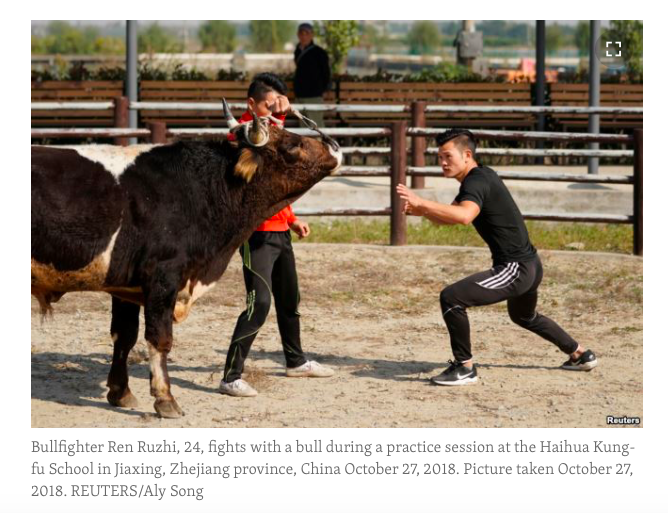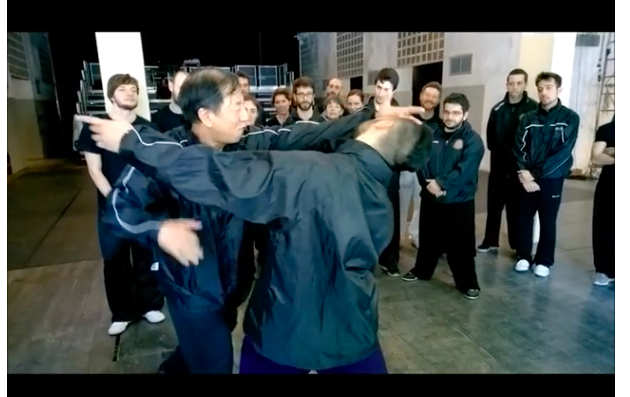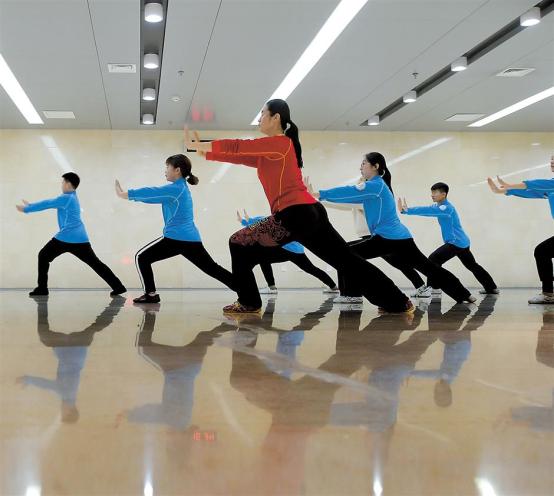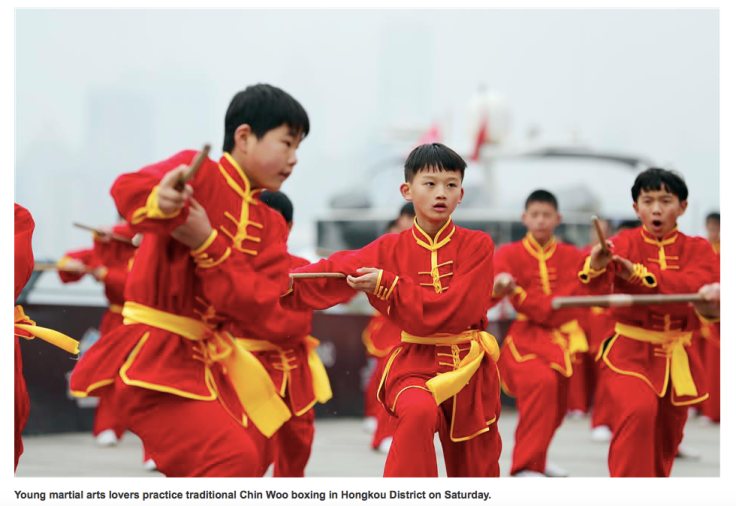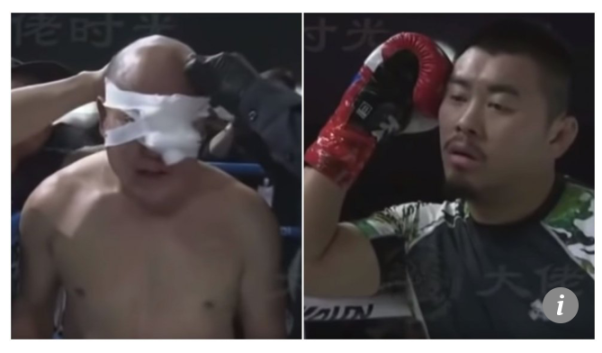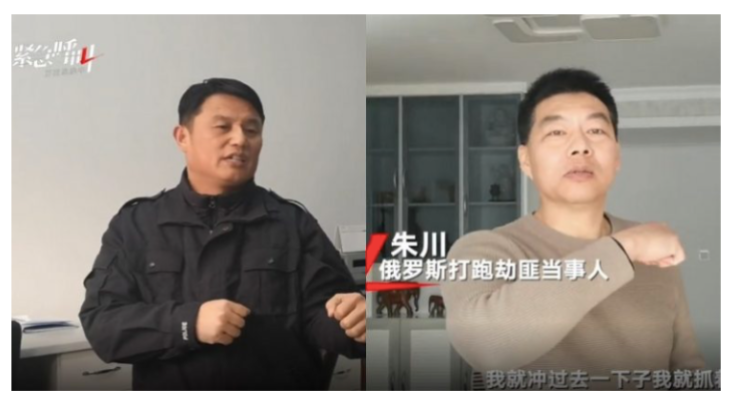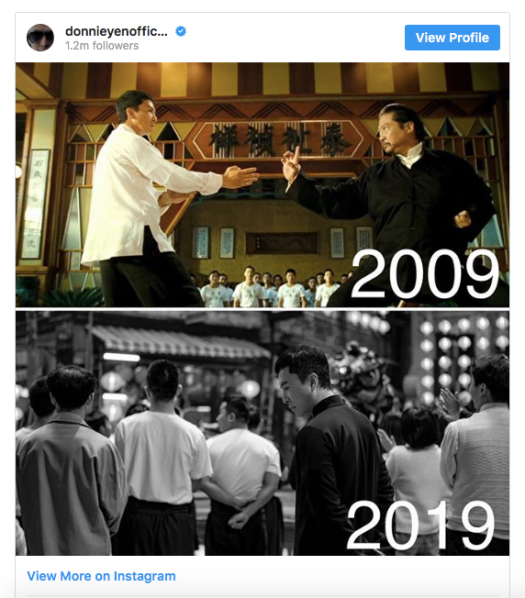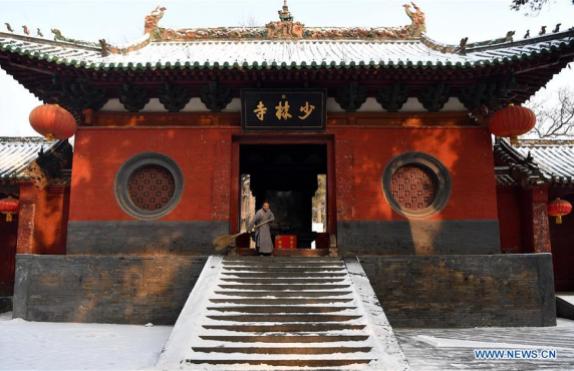Chinese Martial Arts in the News: January 20th 2019: Jingwu, Chinese Armor and Liberating the Nunchuck
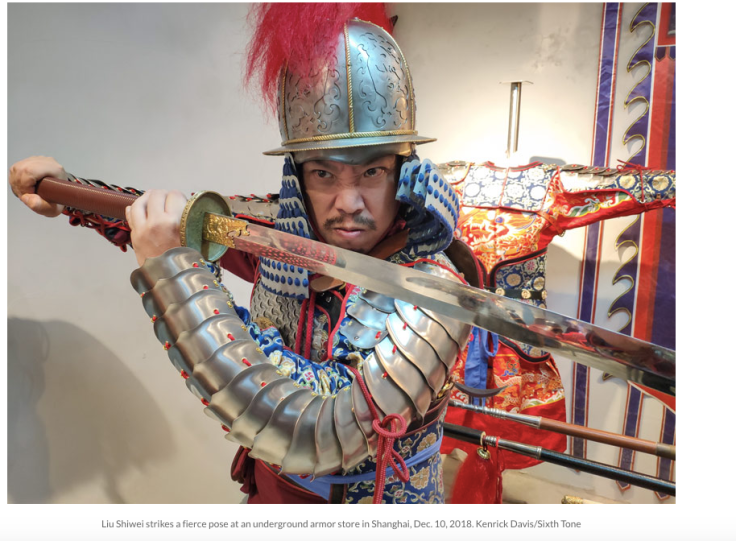
Introduction
Its been over a month since our last news update, which means that there is no better time to get caught up on recent events! For new readers, this is a semi-regular feature here at Kung Fu Tea in which we review media stories that mention or affect the traditional fighting arts. In addition to discussing important events, this column also considers how the Asian hand combat systems are portrayed in the mainstream media.
While we try to summarize the major stories over the last month, there is always a chance that we may have missed something. If you are aware of an important news event relating to the TCMA, drop a link in the comments section below. If you know of a developing story that should be covered in the future feel free to send me an email.
Its been way too long since our last update so let’s get to the news!
News From All Over
True story. While hanging out with with the guys at my university martial arts club in Japan, it was a constant point of fascination that while I was allowed to own all manner of firearms (most which were strictly prohibited in Japan), several traditional Japanese martial arts weapons, including nunchucks, were illegal where I lived. Being a resident of New York State (and not a student of traditional karate), I have never actually owned a set of nunchucks. But maybe its finally time for that to change!
A federal court recently struck down the state’s ban on these weapons as unconstitutional and declared them to be covered under the Second Amendment. Various news outlets have reported on how this ruling came about, but I liked the coverage over at Bloody Elbow.
Last month Judge Pamela K. Chen of the U.S. District Court for the Eastern District of New York ruled that New Yorkers have a constitutional right to own nunchucks. The ruling comes after James A. Maloney, a lawyer and nunchucks enthusiast, launched a complaint over the state’s 40-year ban on the traditional martial arts weapon in 2003.
According to The New York Times New York decided to criminalize nunchucks in 1974 while the “United States was in the middle of a kung fu fever” inspired by martial arts movies.
At some point I am probably going to write a blog post on all of this. Obviously the weapon came to be strongly associated with Bruce Lee, and I feel that its subsequent ban reveals a darker side to the “Kung Fu Fever” of the 1970s. More specifically, news reports of the era were quick to point out that African-American and Hispanic youth joined various martial arts groups in huge numbers. Given the racial, social and political subtexts of Bruce Lee’s films, the sudden popularity of hand combat systems among young men of color made many authority figures uneasy. Everyone from school teachers to politicians had something to say about his phenomenon. The ban on these weapons makes more sense (historically speaking) when viewed through a racial and generational lens. But I need to read and think a little more about this before jumping into a more detailed discussion of that episode. In the mean time, I should probably just decide what type of nunchuck needs to be added to my collection. I have certainly seen some interesting flails in old Chinese photographs….
One place that you are unlikely to ever run across a set of nunchucks is in a Wing Chun class. But that is ok as, according to this review in the South China Morning Post, Wing Chun offers many benefits to the perpetually stressed, always on the go, young professional. Basically, “mindfulness practice” is key to not getting hit in the face.
That brings us to one of the most interesting aspects of this article. The author finds it necessary to provide a “trigger warning” and lets readers know that there is a lot of two-person drilling in Wing Chun, so if you decide to go to a class you need to be ok having a certain amount of physical contact with strangers. If this bothers you, then “you should bring a friend.”
I began to wonder whether the author might actually have been more comfortable in a class on the Taijiquan solo forms as I read this article. Indeed, I felt as though she was attempting to push Wing Chun in that direction as I contemplated her first impressions of the practice. This is a valuable reminder of the gap that often exists between hardcore martial arts enthusiasts and the new students who we are always trying to attract to our schools. While so many of us are looking for greater levels of “realism” (e.g., bodily conflict) in our training and sparring, its well worth remembering that these sorts of aspirations don’t fit within a large segment of the population’s mental map of the martial arts. They are dealing with a very different set of “discomfort thresholds.”
Personally, I would be much more concerned if my martial arts class involved “incidental contact” with any sort bovine, rather than a human training partner. Chinese bullfighting, which leapt into the popular press during the autumn of 2018, is still managing to keep itself in the news. This recent story in NPR is of interest as it includes some discussion of how bullfighters (wrestlers?) are trained and the competitive structure of their shows All of this explained by the performers themselves with invocations of “the explosive power of hard qi gong” and meditations on Chinese masculinity.
A theoretical lens for approaching the recent bullfighting phenomenon might be found in the scholarly literature on public spectacles. I suspect that it could also provide a certain amount of analytical purchase on our next story as well. The Fox Sports desk has been running a number of martial arts features recently. Their most recent offering is modestly titled the “5 most unbelievable Chinese martial arts techniques of all time.“
The article itself is basically background commentary on video clips featuring five distinct styles. They portray a range of both traditional and more modern practices. I don’t think a long-time student of the Chinese martial arts is going to learn anything new here, but the clips might be useful as an illustration of the sorts of material that the general public finds interesting.
One of the more important articles in this news roundup, titled “Honoring ancestors in old boxing tradition,” was published at Shine.com (the Shanghai Times). It profiles Huo Jinghong, the great-great granddaughter of Huo Yuanjia (1868-1910) and the “inheritor” of his lianshouquan style. What makes it so interesting is that the further you read, the more complicated all of this becomes. Like all Chinese, university level, martial arts coaches, Huo’s background (and first love) is actually the performative disciplines of modern Wushu. Her family never taught her Huo Tuanjia’s lianshouquan (or any other traditional art) as they had stopped practicing it during the Cultural Revolution (and possibly before). In actual fact, she seems to be researching and reconstructing the style as much as anything else.
Yet the popular discourse around her efforts insists on emphasizing her genetic relatedness to Huo Yuanjia and concepts such as transmission and inheritance. Much of her efforts in this area also appears to be rooted in (or at least inspired by) a couple of big government backed projects to promote Huo Yuanjia’s memory (and the historic Jingwu movement more broadly) for political and economic purposes. In reading this article I felt like I had come across a short case study in how these sorts of public diplomacy and economic development projects take root in, and eventually restructure, the identities and practices of various individuals.
Her enduring connection with celebrated ancestor Huo Yuanjia restarted in late 2014, when she was asked to shoot a video to display lianshouquan. It was actually the first time that she learned the routine of the ancient boxing art.
“Lianshouquan had long been forgotten in the family,” she said. “My father learned a bit when he was a child but was stopped by my grandfather Huo Yating.”
Huo Yating’s decision was aimed at protecting the family during the “cultural revolution” (1966-76). His father, Huo Dongge (1895-1956), the second son of Huo Yuanjia and the major inheritor of the boxing art form, moved to Southeast Asia in the 1920s and never came back. Such an “overseas connection” could have spelled disaster for the entire family during the “cultural revolution,” so the family kept a low profile away from martial arts.
To really understand Huo Jinghong’s profile, it should probably be read in the context of another article (also published in Shine.com) titled “Martial arts fans mark Chin Woo master’s 150th birthday in Shanghai.” While much more general in nature, it suggests something about the scope of the efforts to promote the city (and tourism) through this aspect of its martial history.
A thousand martial arts lovers practiced traditional Chin Woo boxing in Hongkou District on Saturday to commemorate the 150th birthday of Huo Yuanjia who founded the Chin Woo Athletic Association in Hongkou in 1909.
The martial artists from both home and abroad practiced the mizong boxing at the North Bund waterfront along the Huangpu River. The martial art style is what has made Huo famous ever since the early 1900s.
The event aims to promote China’s traditional martial arts culture and highlight the spirits of the Chin Woo association such as patriotism, self-cultivation, justice and readiness to help, according to the Shanghai Chin Woo Athletic Federation, the organizer of the event.
Our next article is also worth taking some time with. It is not an exploration of the traditional martial arts so much as an extended investigation into the emergence of armored fighting (both in the context of competitive events and historical reenactment), in China. This reporting brings up all sorts of questions about identity and the current direction(s) of Chinese nationalism. Its worth noting that the larger social movement that these practices seem to be most closely discursively related to is not the martial arts per se, but rather the hanfu traditional clothing movement. Again, it may be time to brush up on the scholarly literature on public spectacle in identity construction and community formation.
Incidentally, the Chinese government is not always enthusiastic about people putting on home made armor and bashing each other with swords and maces in public places. That is just hard to imagine…
Here is the money quote:
It’s entertaining — even comedic at times — but for Gao, bringing China’s martial past to life through real armor, combat, and historical re-enactment is a serious matter. “Only if you understand this can you understand how you came to be — how your own nation, your own people, made it to the present day,” he tells Sixth Tone in December from a Shanghai café, a stone’s throw from the video game studio where he works as an animator.
As always, the South China Morning Post has had some things to say about the martial arts. Perhaps the most articulate piece was this editorial defending Xu Xiaodong’s right to make a living through fighting. Apparently he has been criticized in Chinese social media for not just harming the reputation of traditional culture, but for being paid by fight organizers (who have started to offer huge purses to anyone who might be able to defeat Xu). Indeed, everyone involved with these bouts appears to be paid. But the recent rhetoric echoes the traditional criticism of those who would “sell their kung fu.” All of that seems pretty unfair to the SCMP’s columnist who notes that professional MMA fighters have a right to make a living. Still, he does implicitly criticize Xu for only accepting challenges from individuals who are obviously inferior opponents.
But that might be about to change. One of Xu’s upcoming challengers (an appropriately fake Shaolin monk), is an experienced fighter in the ring and might provide a more interesting contest while allowing Xu to continue his quest to debunk the “frauds” of the traditional Chinese martial arts community.
The next article is for those who prefer their “reality fighting” to happen on the street rather than in a ring. It is an account of two Chinese martial artists who get the better of three Russian thieves attempting to snatch a bag from a Chinese tourist. The moral of this story appears to be that the “Chinese tourist” you are threatening to pull a weapon on might just be an off-duty law enforcement officer.
How did Bruce Lee die? Newsweek seems a little late to this party, but enquiring minds never seem to tire of this debate. The magazine’s webpage published an article summarizing the major theories that have arisen over the years, including some of the more medically sound ideas that have been proposed recently. This might be a fun read for Bruce Lee fans. Those looking for general biographical treatment can check out this recent article over at the GB Times.
Did you see Ip Man’s ten year challenge photos? I thought that was pretty clever. Apparently Donnie Yen would like to remind us that Ip Man 4 is coming soon. Incidentally, I am sure someone could turn this into a great meme. Any takers?
I thought “Henan’s Snow Covered Shaolin Temple” was a better than average photo-essay. It is more focused on architecture than Kung Fu (though there is a bit of that). Yet some of these images are striking. Worth checking out if you are a Shaolin fan and can’t get out to train because of the snow!
If you live anywhere in New York State, not being able to get out to train might be the least of your problems. Given the amount of snow that just fell, we will all be snowed in for a while. Luckily TimeOut magazine has the entertainment covered. It has just released its list of the “21 Best Kung Fu Movies Made in Hong Kong.” Given that none of us are going anywhere, we may as well grab the popcorn and boot up the streaming service of our choice. While all quality picks, I thought this list played it pretty safe. So do you see anything that is missing?
Martial Arts Studies
The spring semester is just starting and the Martial Arts Studies community is lurching back to life. As always, there is a lot to get caught up on. The latest issue of MAS, packed with original research articles and reviews, has just be released. Head on over to the Journal’s webpage to find out what is inside.
The table of contents is as follows. (Hey, look at that. A crack team of scholars wrote an article about the development of Wing Chun in Germany!):
Be sure to also check out the Martial Arts Studies YouTube channel. The presentations from this years Bruce Lee conference have just been posted, and it looks like there is some interesting stuff. Given that we recently discussed the classic article “Liberate Yourself from Classical Karate,” it might be fun to start with Lyn Jehu’s paper “Bruce Lee or Budo? Is the Mess Really that Classical?”
On the journal front, readers will be excited to learn that there is also a new issue of Revista de Artes Marciales Asiáticas (RAMA) with multiple English language articles. You can see its table of contents here.
Last but not least, Greg Downey has just uploaded his paper (with Monica Dalidowicz and Paul Mason) “Apprenticeship as method: Embodied learning in ethnographic practice.” This is a nice methods piece that will be helpful for many researchers in the field of Martial Arts Studies. You can read it at Academia.edu.

Kung Fu Tea on Facebook
A lot has happened on the Kung Fu Tea Facebook group over the last month. We discussed a set of antique butterfly swords, reviewed important martial arts manuals and learned that bodily techniques from the traditional Japanese martial arts could help us in daily life. Joining the Facebook group is also a great way of keeping up with everything that is happening here at Kung Fu Tea.
If its been a while since your last visit, head on over and see what you have been missing!


